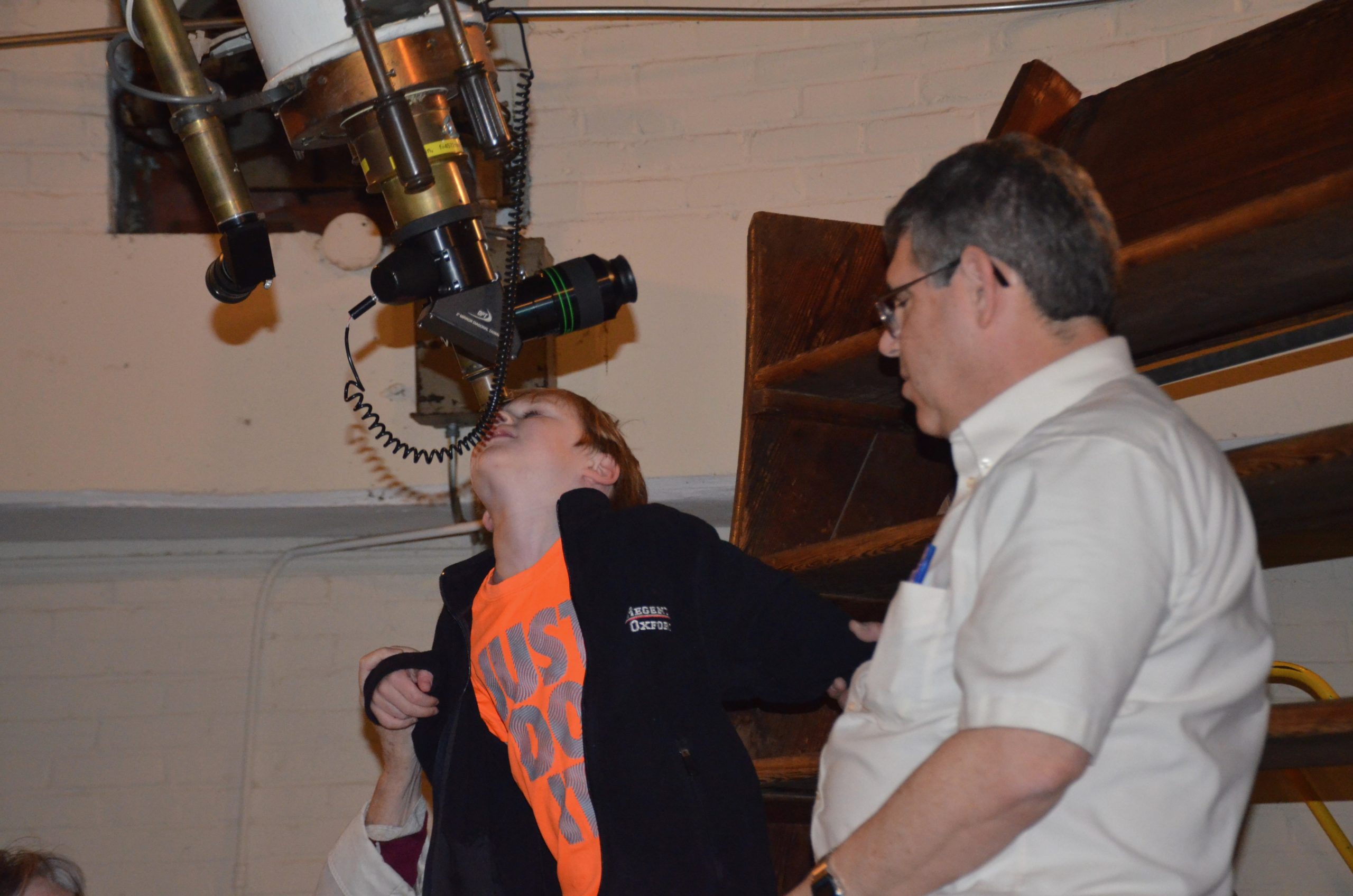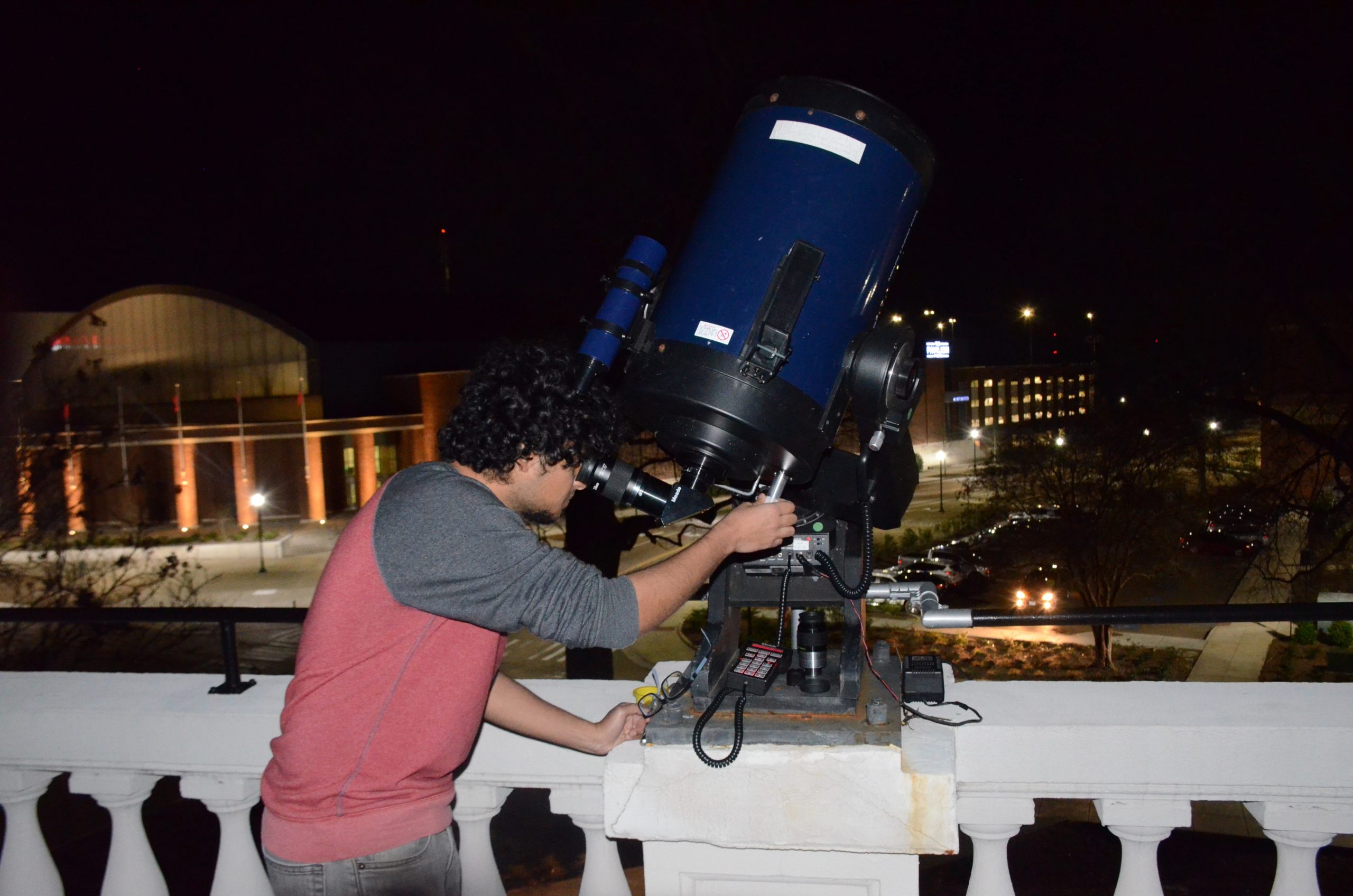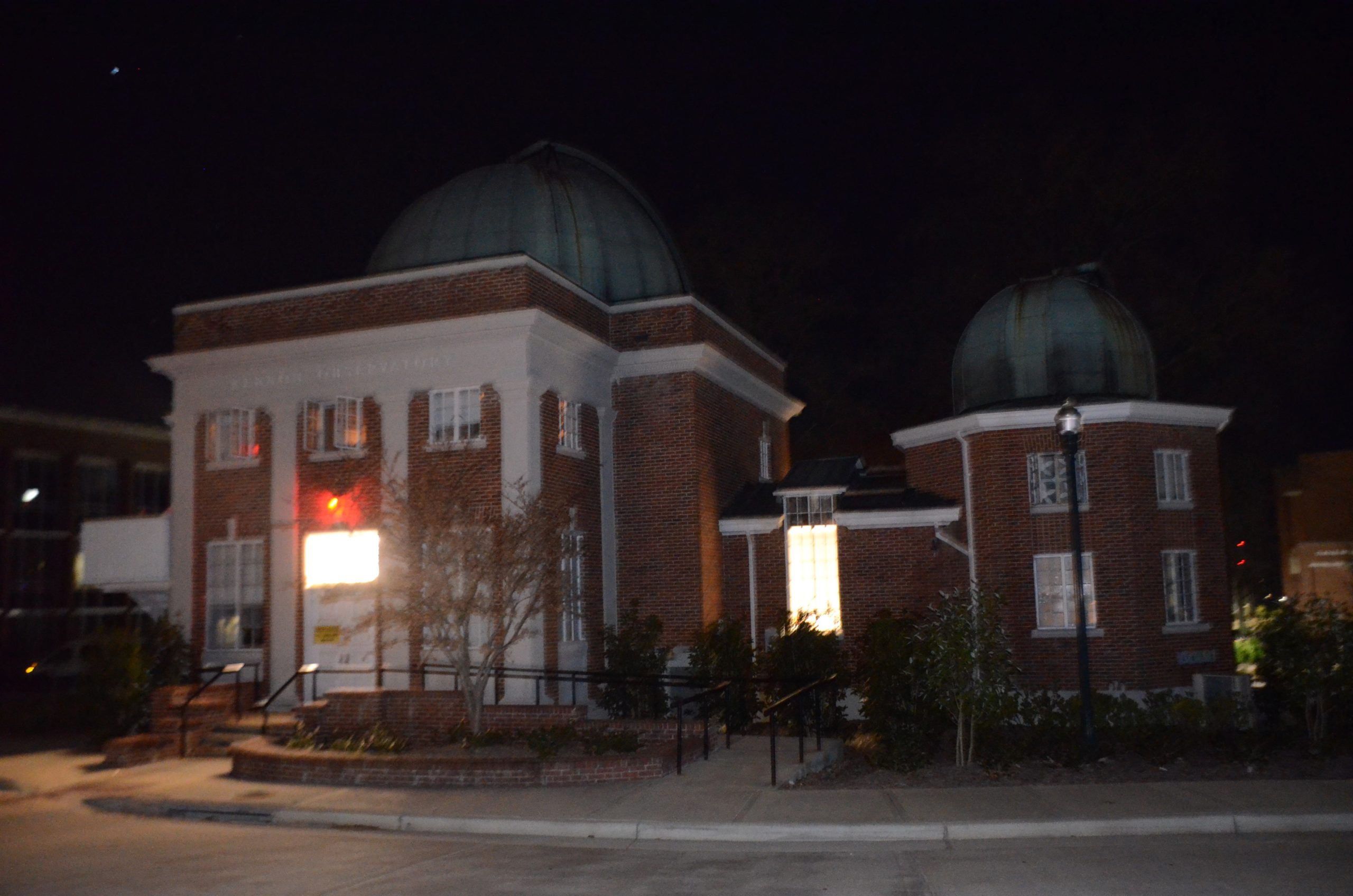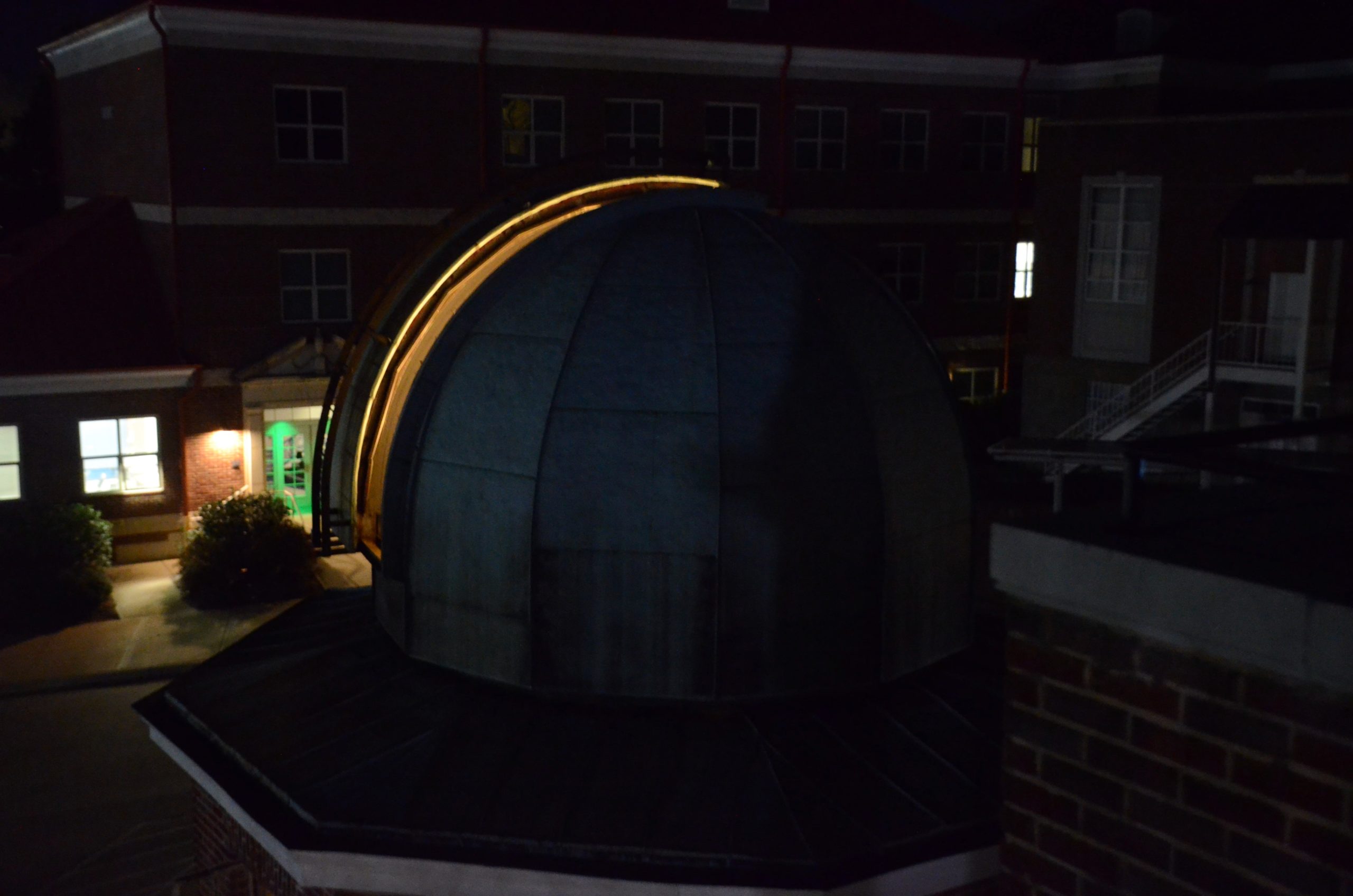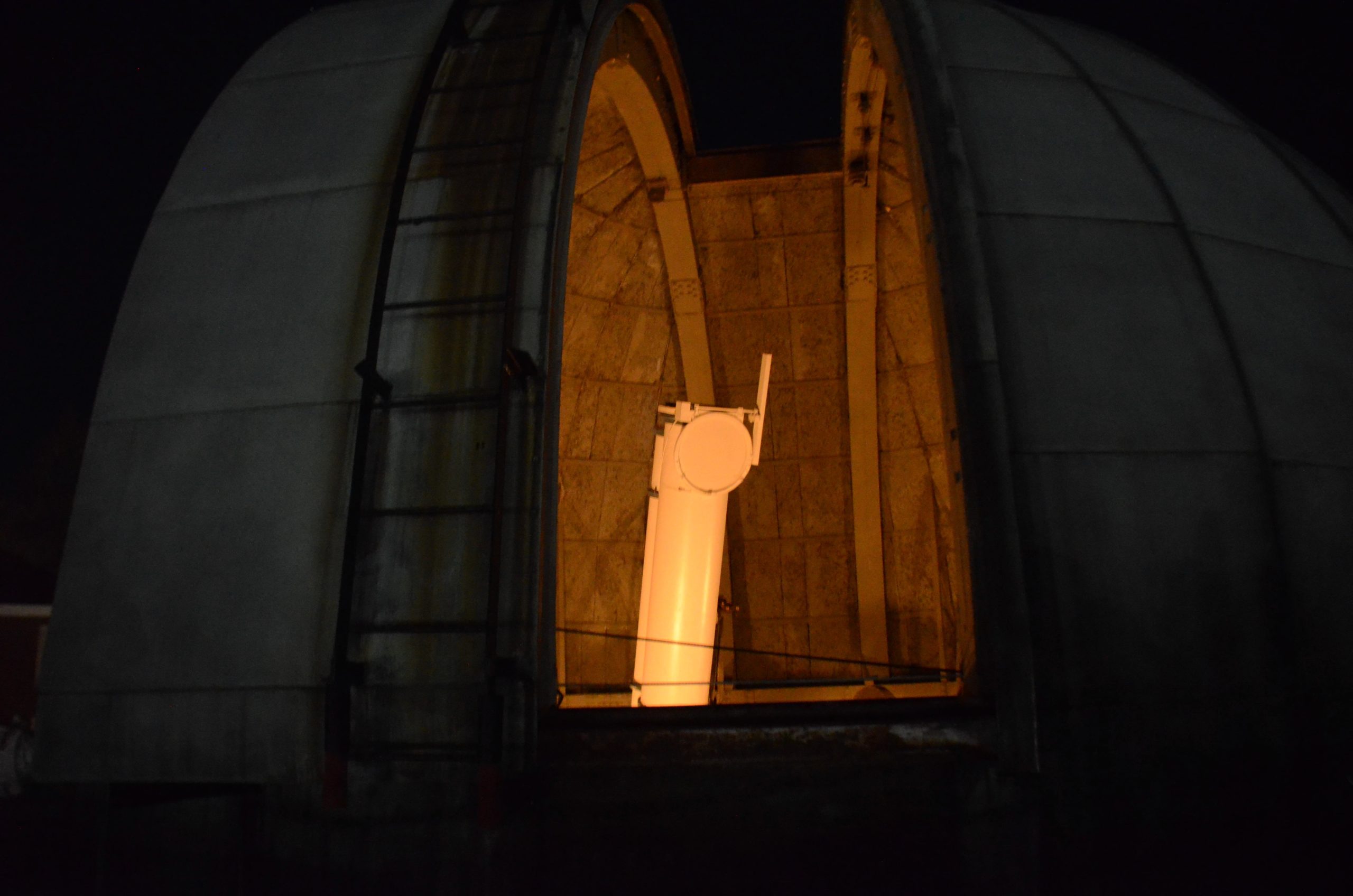It was Super Bowl Sunday yesterday in Oxford, Mississippi. But, instead of gathering around the TV at a watch-party to see the much-anticipated commercials and the Chiefs play in their first “Big Game” in 50 years, some spent their Sunday night watching the stars in the sky rather than the stars on the field.
Once a month, Kennon Observatory, adjacent to Lewis Hall and across the street from the Turner Center, plays host to an “Open House,” when Ole Miss students and visitors from Oxford can come to see the cosmos. On Sunday night, the moon and the Orion Nebula were the big-name players.
“(The sky)’s lovely,” Sumeet Kulkarni, a physics graduate student from India, said. “I haven’t caught on the (football) fever yet, but I do understand how people are about it here. Despite (the game), I’m really happy to see a lot of people here tonight.”
Between 30 – 40 people (a mixture of students, as well as young and old Oxonians) attended the Open House, which began at sundown at 5:45 pm, just minutes after Super Bowl kickoff, and ended at 8:30. With the Oxford-University Transit buses inactive on Sundays, the lights at the bus stop were turned off, in addition to those in Vaught-Hemingway Stadium, to avoid light pollution for the telescopes. The stargazing requires good conditions, and Sunday night featured cloud-free skies with only a bit of atmospheric haze.
Kulkarni, who was operating a portable, digital 8-inch reflector telescope on the ledge of the observatory, was able to take advantage of its modernity and mobility to show planets in Earth’s solar system like Venus, Uranus and Neptune, as well as the Orion Nebula and the star Aldebaran, commonly known as the “Eye of Taurus.” Since the telescope is programmable, with only the push of a few buttons, it can target a number of celestial bodies.
Dr. David Sanders, a computational physicist and research scientist at the university, operated the 127-year-old 15-inch refractor telescope in the larger of the two green copper domes at Kennon Observatory. He said that Ole Miss is unique in giving the public and its students a chance to use its telescopes, whereas other schools would not.
“For one thing, there aren’t that many campuses that actually let the students look through a telescope regularly. Most of the time they’re sitting in front of the computer,” Sanders said.
In addition to the older telescope, the smaller dome of the observatory houses a digital 17-inch reflector telescope, complete with an electronic camera that allows for sophisticated imaging.
Sanders explained to those at the Open House the history of the original telescope and campus observatories. After having what is now Barnard Observatory built in 1859, then-Chancellor Frederick Barnard wanted Ole Miss to have the world’s largest telescope there. However, soon after it was finished, the Civil War began, and it was never delivered to campus.
Barnard Observatory served as the chancellor’s residence and a Civil War hospital, then later a classroom, sorority house and location of the physics department, when in 1893, the university finally got its telescope, a different instrument from the Sr. Howard Grubb Co. With the completion of Kennon Observatory in 1939, the telescope was moved across campus to its current location.
Sunday night, not everyone at the Open House was there out of mere curiosity. Freshman Jackson Berning, who is from Kansas City and was sporting a Kansas City Chiefs jacket, said that it was really the extra credit for his astronomy class that brought him there, but he was amazed by what he saw.
“Honestly, this science just fascinates me, everything about it,” Berning said. “It’s like a living textbook. I’m a big Chiefs fan, but I don’t even know the score right now.”
Oxford High School science teacher Amy Rosen brought her young daughter to the Kennon Open House for the second time Sunday night, after they had come in December. She said in all her years as a teacher, she had never seen the moon so amplified, nor had she seen Saturn at all. For her, choosing the Open House over a football game was no contest.
“I thought it was amazing, so we decided to come again,” Rosen said. “This has been on the calendar for a while.”
Six-year-old Reed Rikard and his grandmother, Betsy Johnston, were also making a return trip to the Open House. Johnston said that her grandson, who overcame his fears and climbed up to the top of an old wooden ladder to look through the telescope (the original ladder for the telescope), was made speechless for the first time in his life.
“It felt like I was on the moon,” Rikard said.

